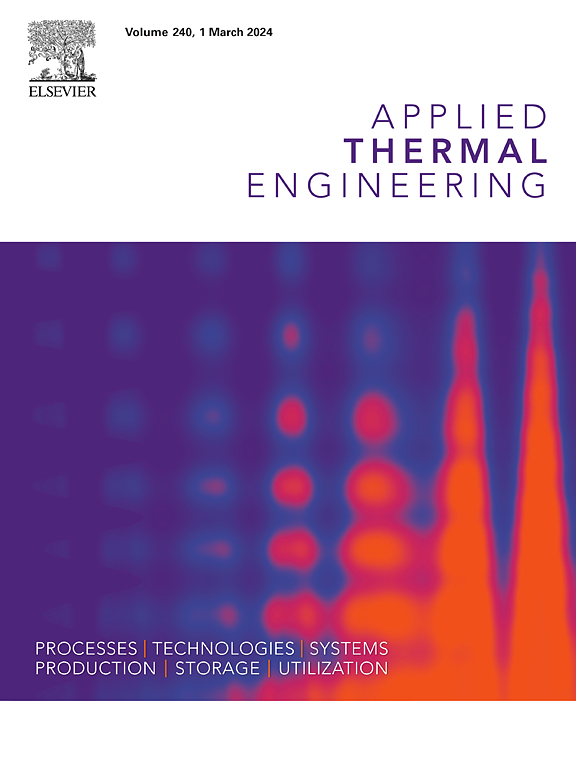Enhancing hybrid air-conditioning and humidification-dehumidification desalination with photovoltaic-thermal panels: A semi-empirical analysis of innovative heat sink integration
IF 6.9
2区 工程技术
Q2 ENERGY & FUELS
引用次数: 0
Abstract
Environmentally friendly and energy-efficient solutions for urban and industrial applications can be achieved by designing a hybrid system for energy generation, air-conditioning, and water desalination. This study examines the integration of photovoltaic-thermal panels with hybrid air-conditioning and humidification-dehumidification desalination systems. Cooling the photovoltaic-thermal panels enhances electrical efficiency, system productivity, and overall performance, improving energy use for sustainable water and energy solutions. A semi-empirical approach is used, combining experimental studies and theoretical modeling with Engineering Equation Solver software. The study investigates key parameters, including solar intensity, photovoltaic-thermal panel area, five heat sink designs, cooling air velocity, overall efficiency, and power temperature coefficient, assessing their impact on system productivity and performance. Comparative and cost-benefit analyses are conducted between the enhanced and basic systems, considering energy and cost savings. Results indicate that integrating photovoltaic-thermal panels with tilted square perforated plate with square pin fins into the hybrid system significantly enhances productivity and thermal performance. Under peak solar intensity, the system achieves a maximum freshwater production of 195 kg/h, a cooling capacity of 135 kW, a supply air temperature of 13.6 °C, 90 % relative humidity, and a coefficient of performance of 11.3. The highest electrical efficiency attained is 19 %. The cost-benefit analysis shows maximum monthly energy savings of 7,200 kWh and financial savings of 800 $ compared to the basic system.
利用光伏热板增强混合空调和加湿除湿海水淡化:创新散热器集成的半实证分析
通过设计一个用于发电、空调和海水淡化的混合系统,可以实现城市和工业应用的环保和节能解决方案。本研究探讨了光伏-热面板与混合空调和加湿-除湿海水淡化系统的集成。冷却光伏热板提高了电力效率、系统生产力和整体性能,改善了可持续水和能源解决方案的能源利用。采用半经验方法,结合实验研究和工程方程求解软件的理论建模。该研究调查了关键参数,包括太阳能强度、光伏热面板面积、五种散热器设计、冷却空气速度、整体效率和功率温度系数,评估了它们对系统生产力和性能的影响。考虑到能源和成本节约,对增强系统和基本系统进行了比较和成本效益分析。结果表明,在混合系统中集成倾斜方形孔板和方形针翅的光热板可以显著提高生产效率和热性能。在峰值太阳能强度下,系统最大淡水产量为195 kg/h,制冷量为135 kW,送风温度为13.6 °C,相对湿度为90 %,性能系数为11.3。达到的最高电效率为19% %。成本效益分析显示,与基本系统相比,每月最多可节省7200千瓦时的能源,节省800美元的资金。
本文章由计算机程序翻译,如有差异,请以英文原文为准。
求助全文
约1分钟内获得全文
求助全文
来源期刊

Applied Thermal Engineering
工程技术-工程:机械
CiteScore
11.30
自引率
15.60%
发文量
1474
审稿时长
57 days
期刊介绍:
Applied Thermal Engineering disseminates novel research related to the design, development and demonstration of components, devices, equipment, technologies and systems involving thermal processes for the production, storage, utilization and conservation of energy, with a focus on engineering application.
The journal publishes high-quality and high-impact Original Research Articles, Review Articles, Short Communications and Letters to the Editor on cutting-edge innovations in research, and recent advances or issues of interest to the thermal engineering community.
 求助内容:
求助内容: 应助结果提醒方式:
应助结果提醒方式:


